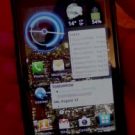Ebooks for materialists
You probably won’t be surprised to know that I love music. I have bought over 650 albums over the last 15 or so years and my collection is still growing fast. Almost every one of those albums I have bought on CD. And yet, the first thing I do when I get a new CD is rip it so that I can listen to it in digital format on my iPod. I’ve often thought about why it is that I hold on so tightly to the physical medium, even though music is readily available and easier to acquire as digital downloads. I think it’s because I’m a massive materialist. An album doesn’t really feel like an album unless I can touch it. I like being able to flick through the album artwork and liner notes. I like the craft involved in packaging. And I like displaying...
XKCD progress indicator
You all read today’s xkcd and wanted to incorporate this formula into your programs straight away. Here’s my Ruby implementation, if you would like a quick fix: require 'date' class XkcdDate # Progress indicator formatted as a date, as in http://xkcd.com/1017/ def self.progress(amount, total) percent = (amount.to_f / total.to_f) years = Math::E ** (20.3444 * percent ** 3 + 3) - Math::E ** 3 Date.today - (years * 365.25) end end It takes two arguments (amount and total, used to form the ratio) and returns a Ruby Date object, which you can format any way you like. And examples of its uses, as in the comic: >> [7.308, 31.12, 47.91, 70.33, 90.42, 100].each {|p| puts "#{p}: #{XkcdDate.progress(p, 100)}"} 7.308: 2011-12-18 31.12: 1995-02-15 47.91:...
Twitter owns @
Here’s a fascinating cultural phenomenon I’ve observed recently: The @ symbol, placed before a word (such as @gourmethotdogs) is beginning to become an instant reference to that username on social network Twitter. In the same way that the popular early subdomain “www” identifies web sites to the average person without the need for text explaining that it is a web site (or even the http:// part of the URL that specifies the protocol!), we’re starting to see signs and adverts for businesses just identifying their presence on Twitter with their name preceded by @. Essentially, Twitter now owns the @ symbol for the purpose of brand recognition. What’s even more interesting about this is that the use of the @ symbol was not a...
Office icon colours: an unusual Microsoft legacy
Here’s an interesting thought: When you think of word processors, spreadsheets, and overhead presentations, what colours come to mind? Blue, green and red respectively, right? As far as I can tell, this branding exercise was a Microsoft invention, added in early versions of Microsoft Office to associate the components of Office (Word, Excel, Powerpoint) with the existing four-colour Windows logo (with yellow representing Outlook Express), but it’s persisted much further than that. Google Docs, OpenOffice and LibreOffice all use the same colour scheme. Even Lotus Symphony has broken out of the Lotus standard colour scheme with its 2.0 icons. I’m fascinated by subtle corporate branding that makes its way into the common consciousness without being...
Laptop lids
(Goodness, this is only my second post this month. Evidently real life is getting in the way. I have a massive list of things I’d like to write about, if that’s any consolation to my readers.) We live in the time where the laptop computer is ubiquitous. Most people who have a home personal computer use a laptop now, and it’s starting to become the primary workplace device too. Although tablets are gaining in popularity, it’ll be a while before they have anything like that market share. So let’s talk about laptop lids. Laptop computers fold away for ease of portability. It’s very easy to carry around a cuboid-shaped device. This isn’t news to anyone. But wherever I go — home or office — I see people walking around with...
“Smartphones” are not phones
I’ve recently acquired a Samsung Galaxy S II Android “smartphone”, and I couldn’t be happier with it. All day long and wherever I am (more or less) I have unlimited access to my email, my social networks, the news, train times, price comparison, my todo list, my calendar, note-taking, shopping lists, sudoku, maps and a hundred other things that augment my life and improve my productivity. And then once in a while some smarmy git will say to me, “well, my phone makes voice calls.” And herein lies the problem with the language we use. Phones are supposed to make and receive voice calls, but my device is not a phone. It’s a palm-sized tablet PC with voice-calling capability. I probably wouldn’t miss voice calls much if...





 Leeds-based non-binary nerd and sewist. I won't break my streak on Duolingo for anyone.
Leeds-based non-binary nerd and sewist. I won't break my streak on Duolingo for anyone.  Delicious
Delicious Leeds Beer Quest
Leeds Beer Quest Twitter
Twitter